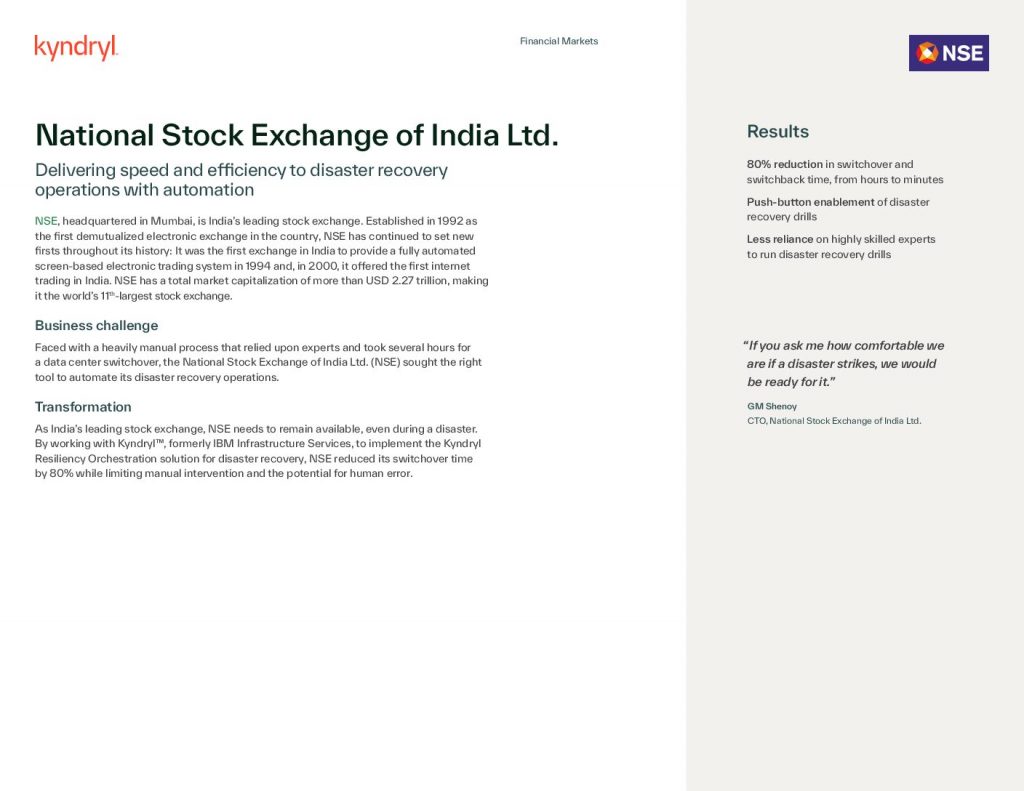Delivering speed and efficiency to disaster recovery operations with automation
NSE, headquartered in Mumbai, is India’s leading stock exchange. Established in 1992 as the first demutualized electronic exchange in the country, NSE has continued to set new firsts throughout its history: It was the first exchange in India to provide a fully automated screen-based electronic trading system in 1994 and, in 2000, it offered the first internet trading in India. NSE has a total market capitalization of more than USD 2.27 trillion, making it the world’s 11th-largest stock exchange.
Business challenge
Faced with a heavily manual process that relied upon experts and took several hours for a data center switchover, the National Stock Exchange of India Ltd. (NSE) sought the right tool to automate its disaster recovery operations.
Transformation
As India’s leading stock exchange, NSE needs to remain available, even during a disaster. By working with Kyndryl™, formerly Kyndryl Infrastructure Services, to implement the Kyndryl Resiliency Orchestration solution for disaster recovery, NSE reduced its switchover time
by 80% while limiting manual intervention and the potential for human error.






